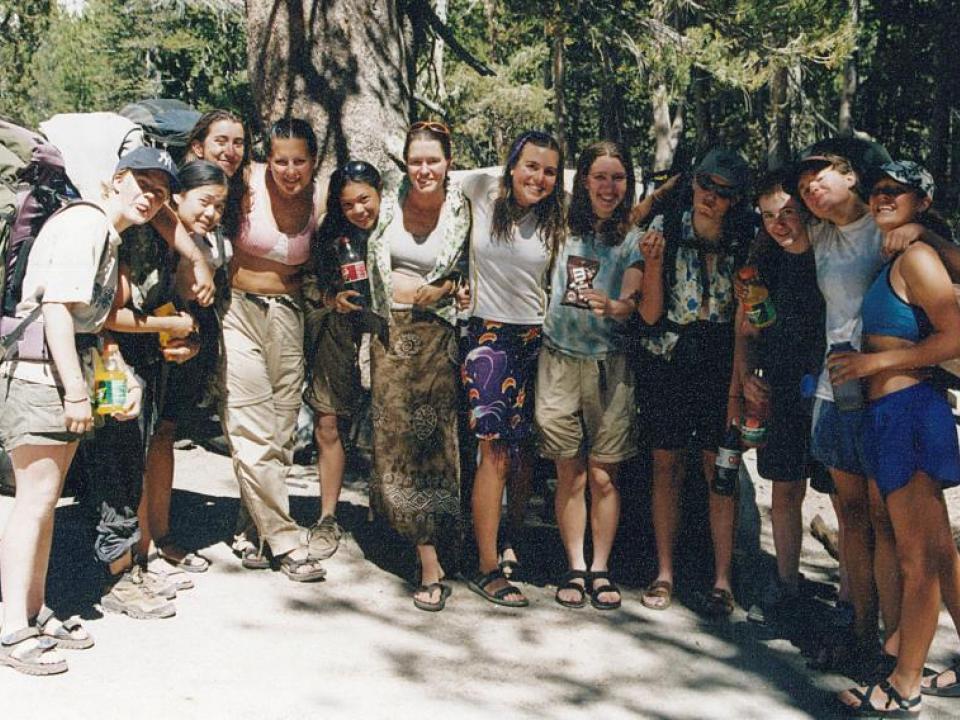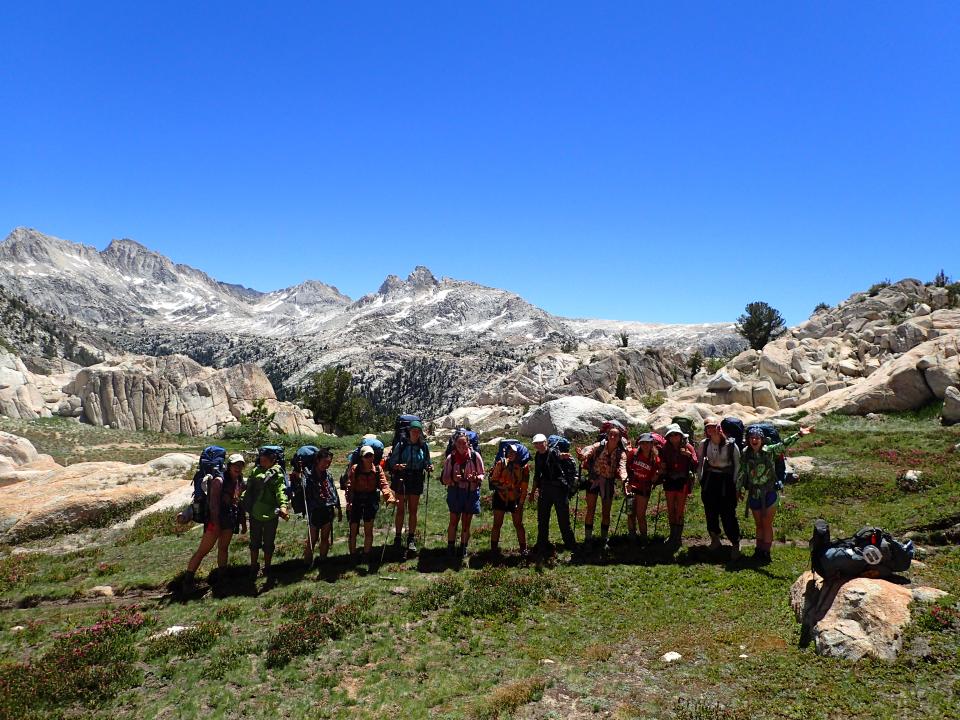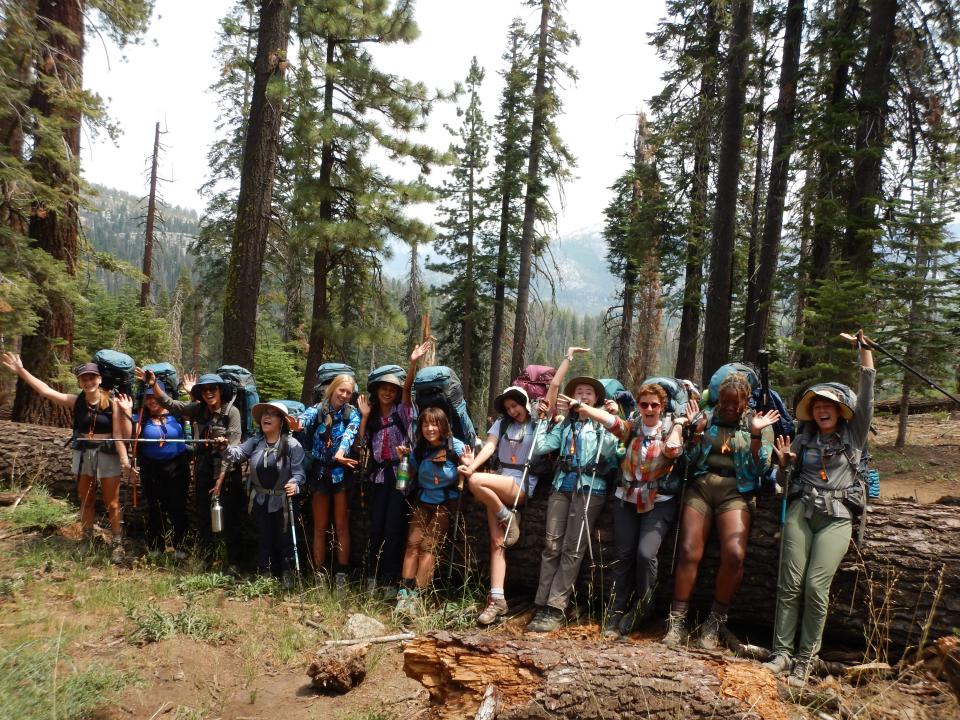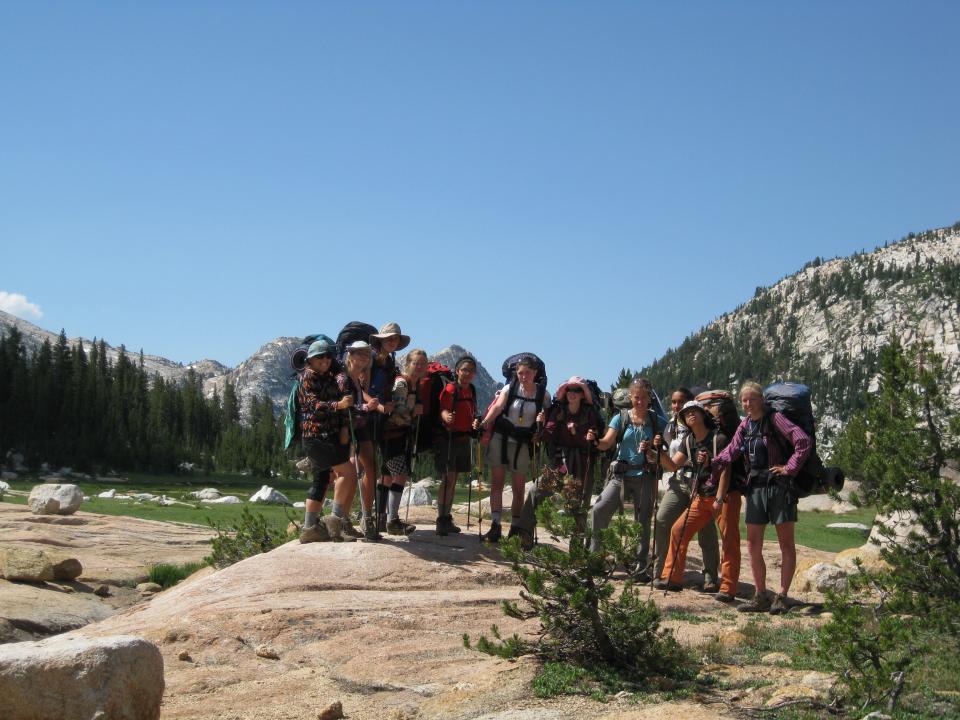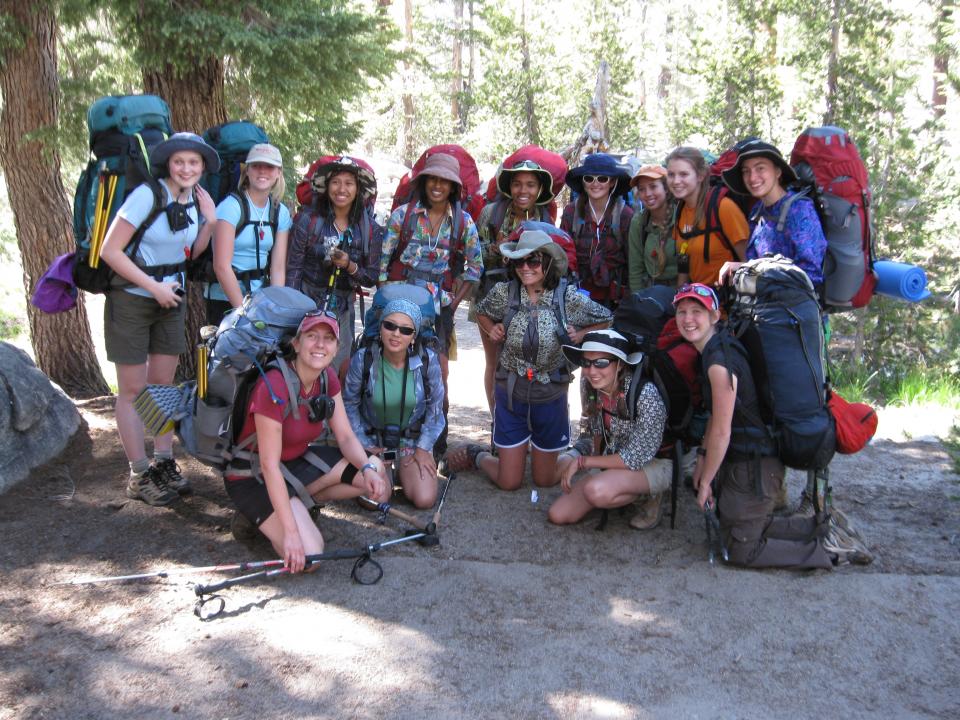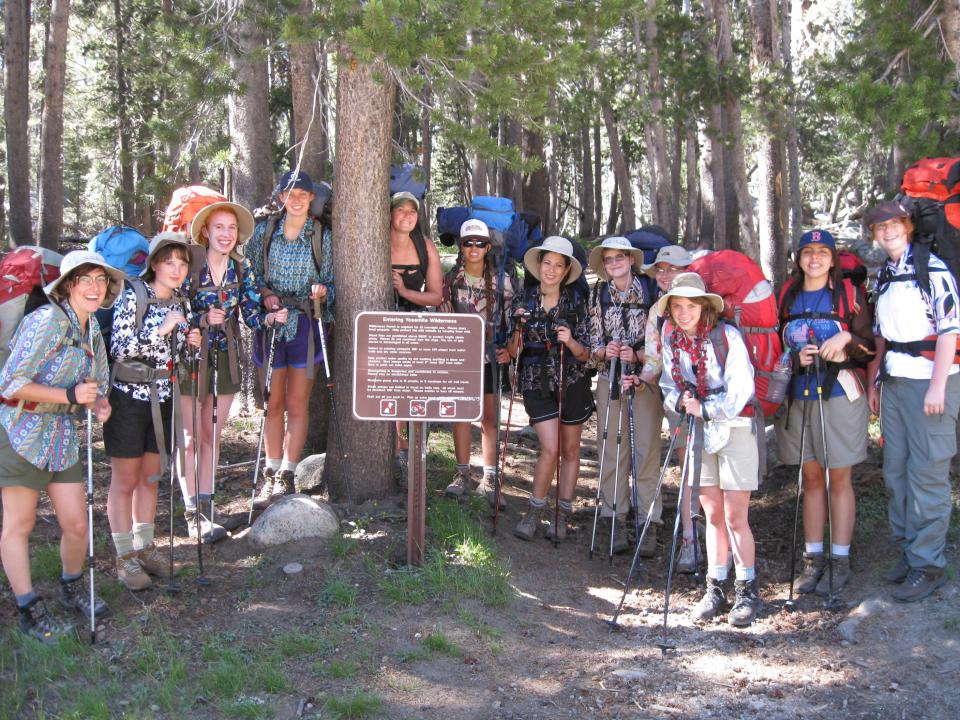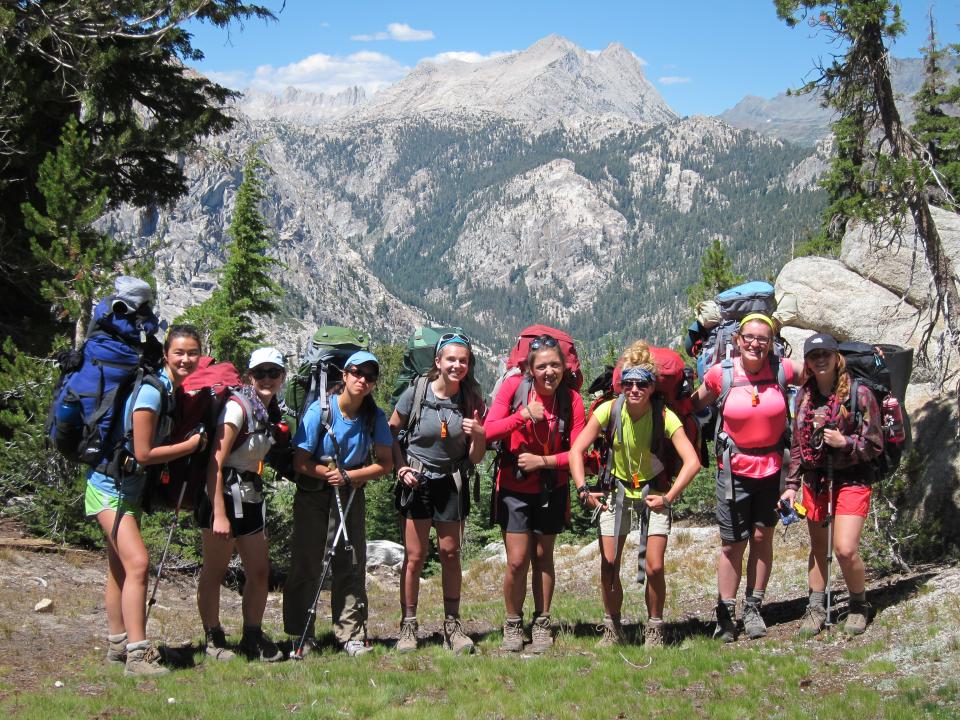Armstrong Scholars Part I: Roses and Thorns
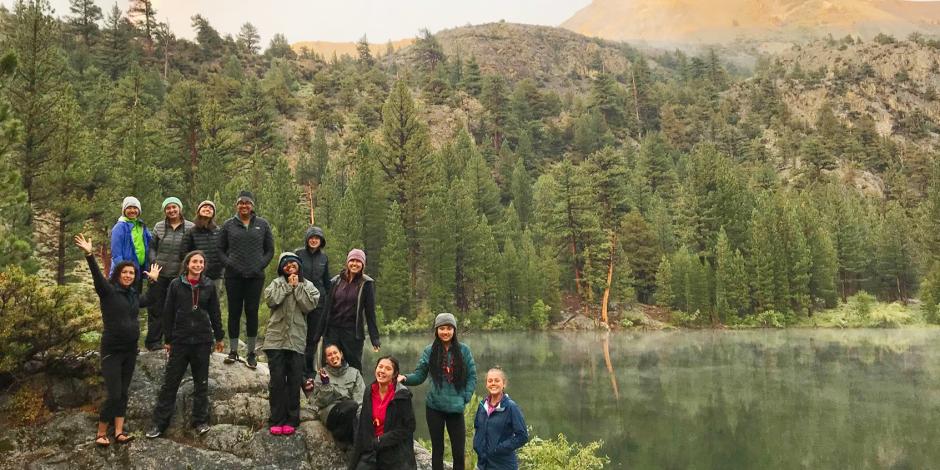
Reading over Heather Sullivan’s biography can make you feel like you’re missing out on swaths of incredible life just waiting to be lived. She is a master yoga instructor, Ayurvedic body worker, creative writer and co-founder of a two-decade old nonprofit organization; she river boards, skis, rock climbs and practices mindfulness. Heather is a certified birth doula, CMT in various massage practices and even a musician. In speaking with Heather, you can sense that her life has been filled with adventure, and what makes her so prolific in her passions and work is a genuine, deep seated interest in this world and its beauty.
In that life of adventure, it is a two-decade old excursion into Yosemite with a group of young women that remains among her most significant experiences.
“The Armstrong Scholars program is by far the most powerful trip I’ve ever been a part of.”
NatureBridge’s former Education Manager in Yosemite Kim Laizer — an adventurer and similarly curious individual with a life filled to the brim with stories and travel — agrees.
“It is so utterly special. I’ve never been on another trip like it,” she says.
The Armstrong Scholars program began in 2000 with a clear, heartfelt idea: to honor Joie Armstrong, a NatureBridge (then Yosemite Institute) educator who was tragically killed at age 26, with an annual adventure in the national park where she’d once taught. For Kim and Heather, both friends of Joie, it became something transcendent: a way for their friend to live on in spirit that would impact them and hundreds of other women for years to come.
The Armstrong Scholars program is by far the most powerful trip I’ve ever been a part of.Heather Sullivan
When Joie was killed in Yosemite in 1999, donations poured in to NatureBridge in her honor. She was a bright light, beloved by the entire NatureBridge staff and anyone in the broader community that knew her. With all of these donations, a committee was formed to create an event that would capture the spirit of Joie and turn it into a lasting legacy.
Heather was part of that small, impassioned committee tasked with designing this event. After much conversation, planning and consideration, the Armstrong Scholars program was born: a 10-day hike into the Yosemite backcountry along a specified route, filled with bonding, open communication, strenuous trails, games and deep interpersonal connection. Young women ages 15-18 could apply to take part, the trip would be led by two female educators and it would — everyone hoped — evoke Joie in order to transform the lives of everyone involved.
“There’s a framework that was created by the committee, and one of the sections within it is called ‘The Essence of Joie,’” says Kim. “Who she is is woven into everything the leaders do.”
“We wanted to create more themes for the curriculum that would stand the test of time rather than strict rules. Make it adaptable and able to be whatever was needed in the future,” says Heather.
Eventually, Heather and Nicole DeJonge (now Nicole Benter) were chosen to lead the very first Armstrong Scholars trip in 2000. Two years later, Kim became part of the third co-leading team of the program, which she went on to manage for 14 years.
The first night of the inaugural program in the summer of 2000, families dropped off the girls at Crane Flat in Yosemite, a campsite close to rolling green meadows and just a few miles from Merced Grove’s giant sequoias. Heather got a chance to meet some parents and welcome the group. It didn’t take long for them to gel.
“I remember the parents had all gone and we were doing dishes after dinner; music was playing and it just erupted into a dance party. We were already having fun on day one,” she says.
From there, that first Armstrong trip became legendary. Many of the traditions associated with the program today were present in that maiden voyage into Yosemite. Symbolic beads, joyous singing, disco shirts, solos — it can sometimes feel like another language has been created within the biosphere of the experience.
“The disco shirts are these beautiful, colorful, bright shirts that we give to the girls because they represent Joie’s sense of fun and flair,” says Kim. “They would put them on when they wanted to celebrate or had a big challenge ahead of them. They mean so much that many participants would wear them later in life when they needed strength. My [2002] co-leader, Sarah Davies, put her disco shirt on when she gave birth to her first child!”
One of the activities the group practiced on that initial hike was a communal meal followed by a version of an activity called “Roses and Thorns.” The concept of Roses and Thorns is simple: you share one of the successes from your day (the rose) and then you share one of the toughest challenges from your day (the thorn). It allows for the participants to be proud, yet vulnerable; excited, yet honest; to connect on the full emotional spectrum from joy to sadness and everything in between. It was a favorite activity of Joie’s when she brought students together on NatureBridge programs.
“A highlight for me was when we came over Red Peak Pass coming up out of Ottoway Lakes, we got buzzed and visited by a hummingbird, which is associated with Joie. That was pretty magical,” says Heather.
“Resupply is one of my favorite things in Armstrong,” says Kim.
Kim has been on both sides of resupply, which is the term given to a midpoint in the hike where friends of Joie, NatureBridge staff, former Armstrong leaders and volunteers from sponsor company Klean Kanteen trek into Yosemite with food, gas and first aid for the group.
“I remember when I led the trip in 2002, just four people carried in all the supplies for 12 of us for the next six days,” says Kim. “Those were some heavy packs.”
Resupply is one of the ways in which people who have been associated with the program can return, if only for a short time, to the indelible Armstrong atmosphere. With one exception, Kim has hiked in to resupply the scholars every year since she began coordinating them.
“What the girls do is put on some kind of fun show, usually with dancing and singing, and sometimes they’re dressed as forest nymphs or have face paint on,” says Kim, barely containing her joyous laughter.
The fun, the magic, the incredible memories; all of this happened in the midst of Heather and Kim — and even a few scholars who’d met Joie — coming to terms with Joie’s murder. For Heather, it took years to realize that while she was leading this group of young women on an epic 10-day journey, she was also still grieving the loss of her friend.
“It was still heavy. I think back on myself at that point and I was still in the full-on grieving process. I didn’t have the vocabulary back then, but I was compartmentalizing my grief,” she says. “But in the end, the trip was also super healing.”
Kim was similarly emotional when it came to talking about aspects of Joie and her experience as a leader. “This beautiful program was put together after such a tragic thing had happened...it’s a reminder that life is precious.”
This beautiful program was put together after such a tragic thing had happened...it’s a reminder that life is precious.Kim Laizer
There’s another piece of the “Roses and Thorns” activity that is sometimes invoked: the bud. If the rose is the success and the thorn is the challenge, the bud is the potential. It’s something that is living and breathing with opportunity. It represents hope about the future; something new being born out of the experiences — both challenges and successes — and can be the most exciting part of sharing.
Heather is now Managing Director of Balanced Rock, which she co-founded with Eliza Kerr in 1999 after Joie’s death. They had applied for and received NatureBridge’s Matthew A. Baxter III Memorial Fund grant to create Wild Women Workshops, a backpacking program that incorporated yoga and journaling, designed to be physically challenging and emotionally healing. The first workshop was so successful that it was expanded into its own 501c3 nonprofit, and the organization’s board and staff still include four of the original participants from that inaugural trip. The name “Balanced Rock” holds special meaning for Heather.
“It was a promise that Joie and I had made to each other when I was guiding in Alaska before she died: I was going to teach her rock climbing and she was going to teach me how to balance rocks,” says Heather. “[After she died] I felt like she was totally with me when I went climbing, and I tried to focus and learn how to balance rocks.”
The Wild Women Workshops newsletter was called Balanced Rock in Joie’s honor, and after some discussion, Heather and Eliza decided it was the right name for the organization as a whole. Balanced Rock is now in its 22nd year bringing yoga into Yosemite, building programs focused on compassion, health, wellbeing, inward reflection and outward exploration.
Kim, too, received a Baxter Award that changed her life. Her Baxter trip to Tanzania is where she would meet her future husband. After seeing the difficult conditions for women in the Maasai community where her husband grew up, she started the Naiyobi Women’s Project through her graduate school program. It was designed to provide education, training and development opportunities for women in the village.
As NatureBridge’s Education Manager in Yosemite until 2021, Kim hired and trained all educators in Yosemite, created the educator development program and managed the Armstrong Scholars program in increasing capacity since 2007. Her life’s passion so far — managing Armstrong Scholars, leading the hike in 2002, the Naiyobi Women’s Project, teaching — centers on empowering women through community and nature.
“I think Armstrong — and Baxter, too — they’re these gut-warming, really impactful programs that so many people later in life say changed their lives,” says Kim.
As someone who was involved with both the Armstrong Scholars program and the Baxter Award, Heather agrees.
“I think what [they do] is take the energy of the person being honored, as well as many of the people closest to that person, and create this amazing, community-building experience. It’s so strong that even people who didn’t know Joie at all can have a deep connection to this program,” she says.
“And I think the dark and the light...that has a lot to do with their impact,” says Kim.
“It reminds us that life is short...and how do we want to live that one beautiful, special life that we have?”
